GUEST BLOGGER CYNTHIA ARGENTINE
Let’s zoom in on the dazzling world of snowflakes! Thanks to physicists and photographers, we can see snow’s magnificent details.
The following activities target grades 2-4 and can be adapted for preK-1. Grades 5+ may enjoy the same activities, engaging with richer vocabulary, deeper themes, and advanced science from the “additional resources” section.
You will need these two picture books:
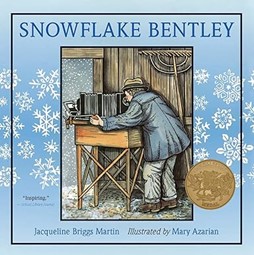
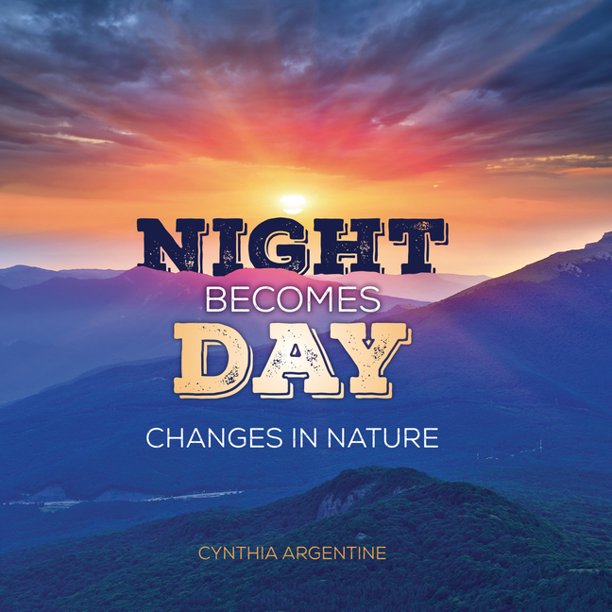
- SNOWFLAKE BENTLEY by Jacqueline Briggs Martin and Mary Azarian (1998). The classic story of a farm boy who figured out how to photograph individual snowflakes.
- NIGHT BECOMES DAY: CHANGES IN NATURE by Cynthia Argentine (2022). Creative nonfiction (expository literature) about many ways nature transforms the world.
Activity #1: I spy snowflakes
This activity involves close observation, introduction to parts of speech, and figurative language. There are seven steps, but you can stop at any point after Step Two and still have a meaningful lesson.
Step 1
Ask students to look carefully at the photographs of snowflakes on page 23 of NIGHT BECOMES DAY: CHANGES IN NATURE and on the last page of SNOWFLAKE BENTLEY.
Step 2
For preK-1, ask students to name all the words they can to describe snowflakes, based on their observations in Step One. Create a master list. For grades 2+, divide students into groups and request adjectives, words that tell us what something looks or feels like. Who can create the longest list? Compare lists.
Adjective examples: white, bright, cold, pretty, unique, clear, interesting, frosty, flat
Step 3
For preK-1, ask students to name things that snowflakes remind them of; create a master list. For grades 2+, group the students and ask them to list nouns. Again, have groups compete to create the longest list. Read the lists. What words are the same? Different?
Noun examples: ice, tree, winter, frost, art, sun, glass, diamonds, kaleidoscope
Step 4
In NIGHT BECOMES DAY, read aloud page 23 and the last portion of page 32. In SNOWFLAKE BENTLEY, read page 20. Ask students to explain how snowflakes form, based on what they heard. How do snowflakes start? How do they grow?
Step 5
Review pages 23 and 32 of NIGHT BECOMES DAY and the last three pages of SNOWFLAKE BENTLEY. Ask students to notice which words the authors use when talking about snowflakes. Students may add these to their lists.
Adjectives: airborne, sparkling, fragile, tiny, six-sided, symmetric, universal, hexagonal, infinite, lovely, delicate, icy, exquisite, lovely, important
Nouns: fleck, dust, bit, water, crystal, branches, star, specks, grandeur, mystery, wonders
Step 6
Ask students to use their lists of words to create similes and metaphors. Remind them: Similes use “like” or “as” to describe something. Metaphors state that one thing is something else, as a way of conveying that we see something similar in the two things. Consider a fill-in-the-blank approach. Simile: “Snow is as (insert adjective) as (insert noun).” Metaphor: “Snowflakes are (insert noun).”
Simile examples: Snow is…
- as cold as ice
- as sparkly as a star
- as delicate as a flower
Metaphor examples: Snowflakes are…. stars, flowers, art, jewels, etc.
Step 7
Ask students to write poems about snowflakes! For preK-1, write adjectives from the master list on blue paper and nouns on white paper. Print copies. Assist students in selecting the words they like from the two groups and ask them to paste the color-coded words onto a template (example below) to create a poem. For grades 2+, ask students to use their lists of adjectives, nouns, similes, and metaphors to craft their own poems. You may give them free rein or recommend a formula, such as haiku or the model below.
Snowflakes are amazing (Adjective)
Clear, crystalline (Two adjectives)
Delicate, detailed (Two adjectives)
As beautiful as flowers (Simile using an adjective and a noun)
As interesting as stars (Simile using an adjective and a noun)
Snowflakes are art (Metaphor using a noun)
Activity #2: Compare and contrast the two books
Read both books aloud. (For preK-1, divide this over several days or sessions.) Encourage kids to think critically as they discuss the questions below.
What are some differences between SNOWFLAKE BENTLEY and NIGHT BECOMES DAY: CHANGES IN NATURE?
Possible answers:
- One is illustrated with handmade art, the other with photographs.
- One tells a narrative story; the other uses a structure based on opposites and cycles.
- One is about a person; the other is about an idea.
- What do both books have in common? Possibilities include:
- Both portray nature as fascinating and worth studying.
- Both invite us to look closely at details.
- Both relate to science.
- Both connect science to art.
Additional resources
- “SEEING SNOW” by Cynthia Argentine. I interviewed Kenneth Libbrecht, a physicist at Cal Tech who specializes in crystal formation. Click the link to find surprising snowflakes in the diagrams and photos!
- THE STORY OF SNOW by Mark Cassino and Jon Nelson.
Featured image credit: “multiple snowflake taster” by bijoubaby is licensed under CC BY-NC-ND 2.0.
Cynthia Argentine grew up next to a tidal creek in Virginia, where exploring by canoe was one of her favorite ways of discovering the joy of the natural world. Her book Night Becomes Day: Changes in Nature (Millbrook Press) was a Bank Street “Best Book of the Year” and a finalist for SCBWI’s Golden Kite Award. She has written several books for the school and library market, such as STEAM Jobs in Cybersecurity, which includes interesting facts about famous computer hacks. Her upcoming books cover topics ranging from NASA to Latin music. Prior to writing, Cynthia earned degrees in English, environmental science, and environmental law and worked as an environmental consultant. When not writing, she enjoys teaching piano lessons, cross-country skiing, and traveling with her husband.
How to connect with Cynthia:
- Website and Blog “Cup of Tea with Cindy”: https://cynthiaargentine.com
- Twitter: @CindyArgentine
- Pinterest: @CynthiaArgentine
- Instagram: @argentine_writer


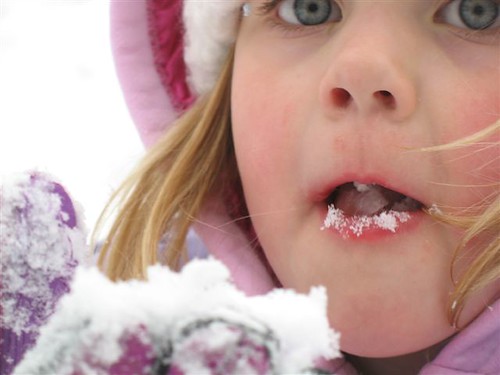




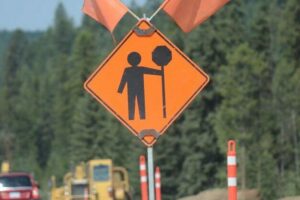
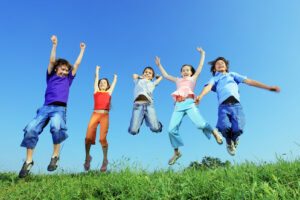
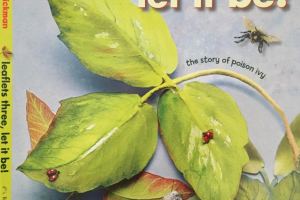


Leave a Reply
Your email is safe with me.